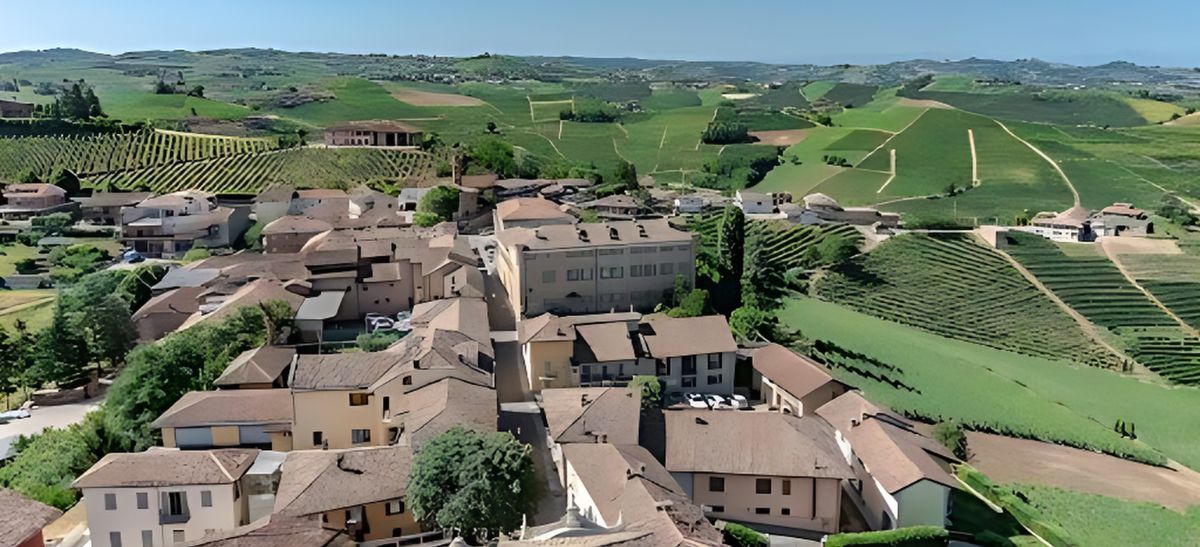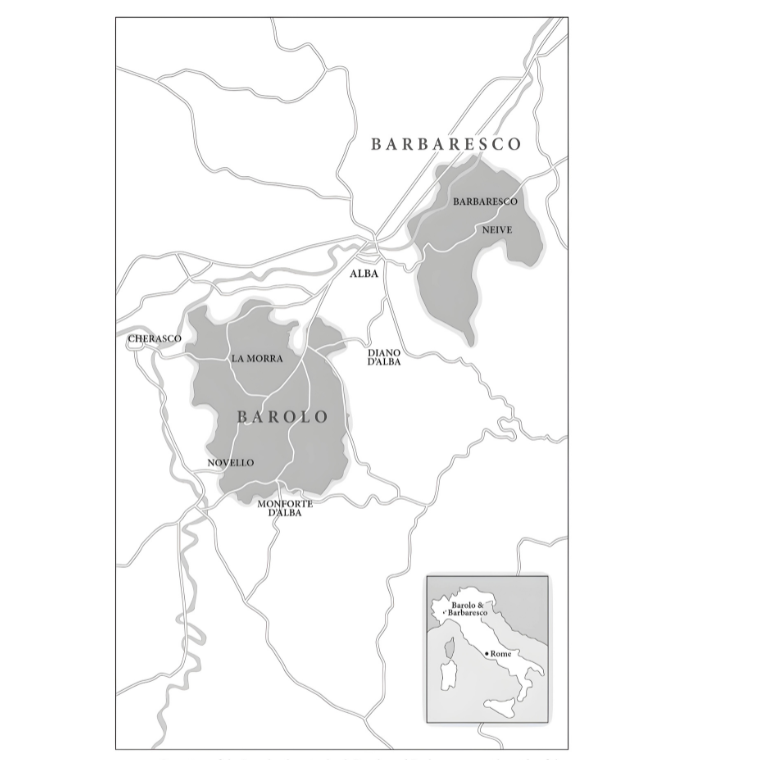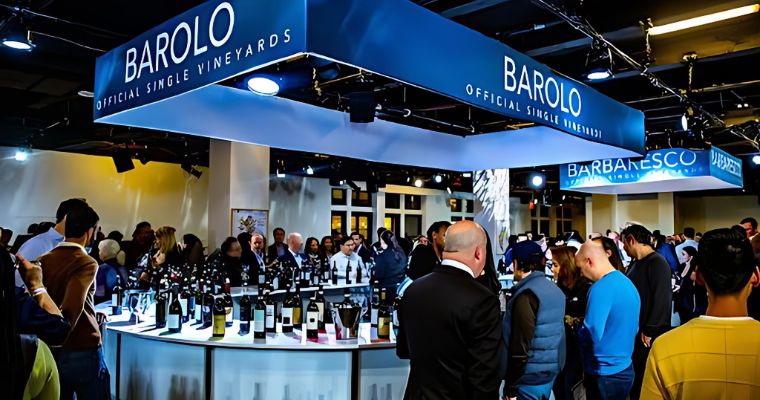Early Bird
Deadline
January 31, 2026
Judging
Date
May 18, 2026
Winners
Announced
June 10, 2026

In the heart of Italy's Piedmont region lie two now-illustrious wine appellations, Barolo and Barbaresco, which stand as veritable monuments to the art of winemaking. These appellations, renowned for their production of red wines crafted exclusively from the Nebbiolo grape, have become synonymous with elegance, complexity, and age-worthiness in the world of wine. But this wasn’t always so, and there’s an intriguing history to tell.
Journalist Kerin O'Keefe, author of Barolo and Barbaresco: The King and Queen of Italian Wine (University of California Press, 2014), an essential essay for those who want to know the history of these wines, recounted that both Barolo and Barbaresco have enjoyed great critical acclaim and international success since the early nineties. "It's almost impossible to imagine that just a decade before this, many producers used to give away a bottle or two of Barolo to their most loyal customers, who would come to the Langhe to stock up on Dolcetto and Barbera, as a way to generate interest in what the producers themselves always considered their star wine," she writes.

Image: Overview of the Langhe showing both Barolo and Barbaresco on either side of the city of Alba.
The Langhe are mountainous areas located south of the Tanaro River, in the heart of Piedmont. Barolo, with its unmistakable castles, and Barbaresco, with its medieval core, define a part of the landscape of northern Italy. One of the organizations working to control this entire territory is called the Consortium for the Protection of Barolo Barbaresco Alba Langhe and Dogliani. The strong foreign investment in recent years has made them especially vigilant against any possible intervention: "The truth is that the Langhe, as we have said many times, are like a coral reef, delicate and with their own ecosystem of knowledge, people, and peculiarities. You have to be careful when approaching and making changes not to distort the territory and everything that this implies and entails."
Regarding the differences between their two main wines, they are clear. "First of all, the size, since the Barolo area is three times that of Barbaresco. Also, they are not geologically equal areas. In fact, they give rise to products that are different in certain aspects. On the other hand, the Barolo area is older and more heterogeneous, while that of Barbaresco is more recent and uniform," say regional experts.
Barolo, often hailed as the "king" of Italian wines, emanates from the eponymous village in the Langhe region. Its robust character, characterized by firm tannins and a bold structure, reflects the rugged landscape from which it originates. By contrast, Barbaresco, known affectionately as the "queen" of Italian wines, springs forth from the nearby village bearing its name. With its more approachable style, nuanced aromatics, and velvety texture, Barbaresco offers a captivating counterpoint to its counterpart, showcasing the diverse expressions of Nebbiolo within the Langhe terroir.
Among the luminaries of Piedmontese winemaking, the Gaja family stands as a beacon of excellence and innovation. Led by Giovanni Gaja, the fifth-generation steward of the family estate founded in 1859, Gaja wines have garnered global acclaim for their uncompromising quality and distinct character. At the forefront are the iconic Barbaresco and Barolo wines, revered for their finesse and longevity.
The youngest member of the family, Giovanni Gaja, now at the helm of the company alongside his two sisters, who handle the international market, had a strong clash with his father, Angelo Gaja, when he wanted to enter and modernize the winery. His green pruning, reduction of grape clusters, use of new barrels, and the decision to plant chardonnay and sauvignon blanc were initially seen as audacious. However, time has proven him right and has elevated the name of Gaja to absolute excellence. A magnificence that should not overshadow the influence and importance of his father, as has happened with other prominent families in Piedmont, who already put the region's name on the radar of top restaurants in the 1980s.
Time has vindicated his vision, elevating Gaja wines to the pinnacle of the global wine market.

Source: Consorzio di Tutela Barolo Barbaresco Alba Langhe e Dogliani
Against the backdrop of this rich winemaking heritage, the Barolo & Barbaresco World Opening (BBWO) 2024 promises an immersive journey into the soul of Piedmontese wine culture. Building upon the success of previous editions, BBWO 2024 invites attendees to explore the latest releases of the highly acclaimed 2020 Barolo and 2021 Barbaresco vintages in a series of curated tastings, seminars, and exclusive events.
Central to the BBWO experience is a deep appreciation for the terroir that shapes Barolo and Barbaresco wines. With their distinctive microclimates and geological soil compositions, the Langhe hills impart a unique character to each vintage, ensuring that no two wines are alike. It is this sense of place, this tangible connection to the land, that imbues Barolo and Barbaresco with their singular identity and allure.
As evidenced by the evolution of the Barolo and Barbaresco regions over the years, change is a constant in the world of winemaking. Both regions have seen shifts in viticultural practices, technological advancements, and global market trends that have shaped their identities and influenced their wines.
In recent decades, Barolo and Barbaresco have experienced a resurgence in popularity on the international stage, thanks in part to the efforts of pioneering producers like the Gaja family. Their commitment to quality, innovation, and sustainability has helped to elevate the reputation of Piedmontese wines and introduce them to new generations of wine enthusiasts around the world.
At first glance, their clarity is impressive; they are not wines with great color. However, their enormous tannicity acts as a fixative, allowing that tone never to fade. They probably resemble the most recognizable pinot noir wines. On the nose, they offer a very expressive perfume. And on the palate, they maintain all the structure that should be demanded of a wine of these characteristics. "They are wines with little color, good bitterness, and well-measured acidity. Perhaps Barolo allows for longer aging than Barbaresco. Anyway, their strength is not in the wood; they easily express the territory," points out Pedro Ballesteros MW, author of "Understanding Wine: Almost everything you hadn't been told about wines" (in Spanish, Planeta Gastro, 2021).
Beyond their borders, Barolo and Barbaresco have left an indelible mark on the world of wine. Their influence can be seen in the rise of Nebbiolo plantings in regions as far-flung as California, Australia, and Argentina, as winemakers seek to capture the magic of these iconic Italian wines in their own terroirs.
In addition to their cultural and historical significance, Barolo and Barbaresco play a vital role in the economic life of the Langhe region. The success of these wines supports local communities, sustains traditional winemaking practices, and preserves the unique landscape of the Piedmont countryside for future generations to enjoy.
[[relatedPurchasesItems-61]]
As sommeliers, trade professionals, and wine enthusiasts converge in New York City for BBWO 2024, they embark on a journey through the storied vineyards of Piedmont, where tradition and innovation intersect in every glass. From the rugged slopes of Barolo to the gentle hills of Barbaresco, each sip offers a glimpse into the rich tapestry of Piedmontese winemaking, a testament to the enduring legacy of Barolo and Barbaresco in the world of wine. With each vintage, these iconic wines continue to evolve, captivating palates and inspiring passion in wine lovers around the globe.
Header Image: Piedmont, Italy; Source: Unsplash
Enter your Wines now and get in front of top Sommeliers, Wine Directors, and On-Premise Wine Buyers of USA.
